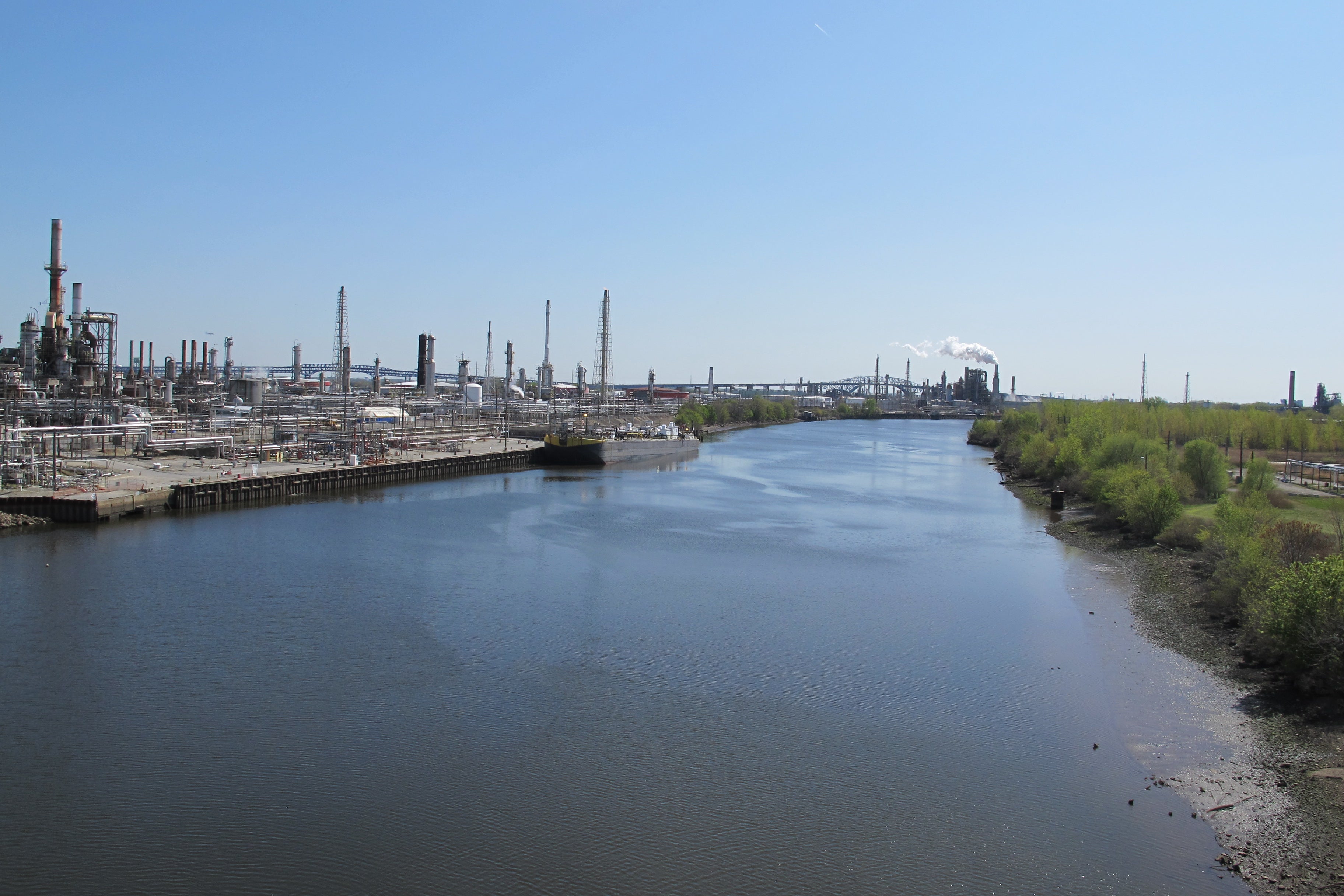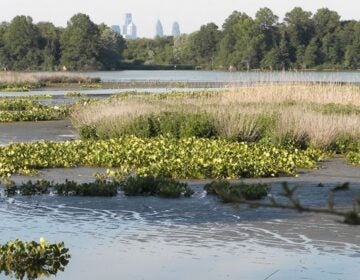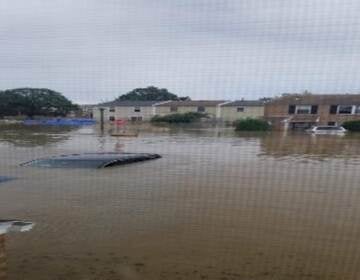Who will weather extreme weather?

From tidal floods to heat waves, extreme weather is in Philly’s long-term forecast. How can the city be better prepared, responsive, and resilient in the face of this challenge? In this Agenda 2015 op-ed the Public Interest Law Center of Philadelphia’s Amy Laura Cahn explores what climate change means for Philadelphia’s critical infrastructure and most vulnerable neighborhoods. This year’s Next Great City platform calls on the next administration to be proactive about storm preparedness.
Imagine a city with 8,000 acres of wetlands protecting it from rising downstream and tidal flows. Imagine those same wetlands drained to construct critical infrastructure. Welcome to Philadelphia where we have sited our Airport, refineries, and main transportation artery on filled wetlands.
And then there’s Eastwick, the nation’s largest urban renewal project–ever. Built by displacing over 8,000 residents and filled with Schuylkill River dredge spoils, much of the neighborhood is now located in a FEMA-designated Special Flood Hazard Area. During Hurricane Floyd, Eastwick’s slab-on-grade homes filled with six feet of water. Now, residents live with the knowledge that flood insurance rates are rising with the tide, since Congress began rolling back insurance subsidies in 2012. Eastwick residents also live with the daily trauma of this situation, according to Eastwick resident Leo Brundage, who has advocated on behalf of Eastwick’s safety for over 30 years. He says, after “being flooded eight times, I’m getting mental anguish and we don’t get any help at all. PTSD, that’s me with regard to flooding.”
Water and weather do as they wish. Nuisance flooding in Philadelphia has increased by 650 percent over the past 50 years. The National Oceanic and Atmospheric Administration attributes the swell to climate change-related sea level rises, land subsidence, and destruction of natural coastal barriers through development. Flooding and extreme weather will only worsen. Sea levels in the Delaware Estuary have already risen at least one foot in the last century. Experts anticipate they will rise at least three more feet within ninety years. In the next 30 years, tidal flooding events in Philadelphia will grow in frequency from 19 per year to 200 per year. For Eastwick, NOAA predicts a seven to twenty-four foot storm surge in a major hurricane, dependant on severity and track.
Flooding and extreme storms are not the only climate change risk. Average temperatures in North America will climb by 4 to 11 degrees Fahrenheit this century, with a projected increase of 700 additional heat-related deaths in Philadelphia by 2099. Extreme heat intensifies health impacts of harmful air pollutants and allergens, exacerbating heat stress and respiratory illnesses, especially for urban residents. Philadelphia’s power grid is second only to NYC in climate change vulnerability, creating risks for all, but particularly low-income residents, seniors, and anyone with mobility issues.
In 2008, the Next Great City coalition laid the groundwork for the Nutter Administration’s Greenworks plan. The Coalition now challenges the next administration to take action on extreme weather events. The Coalition calls for the next Administration to
-
Make extreme weather vulnerability a required factor in City infrastructure decision-making and ensure infrastructure can withstand extreme weather.
-
Commit to the City’s newly formalized flooding task force, requiring staffing and high level buy-in, and implement FEMA’s Community Rating System, which will help mitigate rising flood insurance rates.
-
Work with community residents, service providers, and business owners to create a comprehensive, public extreme weather emergency response plan, and disseminate the plan in all relevant languages.
-
Require newly constructed buildings to withstand increased heat, precipitation, and flooding, protecting new residents and business, rather than shifting the burden of risk to them.
-
Help property owners ensure their residential properties are moisture tight to reduce vulnerability in times of flooding or storms.
The City has taken strong first steps at municipal responsibility for adaptation, mitigation, and resiliency. We need the next administration to embrace that work and build on lessons learned, and to understand what climate justice means for Philadelphians.
In writing the opinion that struck down Pennsylvania’s Oil and Gas Law over a year ago, then-Chief Justice Castille reminded the Commonwealth, including municipal governments, of Pennsylvania’s constitutional right to a healthy environment on behalf of “all the people,” to be enforced equitably and for the benefit of future generations. As we saw in Hurricanes Katrina and Sandy, it is unquestionably the most marginalized residents–particularly low income communities and communities of color–who are most at risk and take the longest to recover. Each of the Coalition’s recommendations requires meaningful participation from those most affected. Above all, the goal should be strengthening vulnerable communities and reducing public health threats. The next Administration would do well to look beyond a narrowly-focused flooding task force and examine the cumulative environmental risks of extreme weather through a climate change commission, one that makes community participation and education a priority.
The next administration would irresponsible if it did not also ask “what of the Energy Hub?” This ambitious plan to revive Philadelphia’s industrial sector relies on tripling the flow of gas into the city–directly to the waterfront neighborhoods of Port Richmond and Marcus Hook. We need leadership to question the cumulative risks of exponentially increasing waterfront energy processing for already vulnerable neighborhoods and the city as a whole. Can we afford to degrade air quality as our city gets hotter? Do we even understand the risks of sea level rise and storm surge to refineries and adjacent communities along our rivers?
For many of us, climate change is merely conceptual. In Eastwick, residents know storms are growing in intensity and frequency. They know the impact of a rising Delaware on their safety and well being. Like so many cities globally, Philadelphia was planned with hubris and constructed in defiance of existing environmental conditions. We buried creeks and streams into underground pipes and channelized and redirected larger waterways. We filled in wetlands that provided natural protective buffer, and built up to rivers’ edges. And we have, without question, asked our most marginalized residents to bear the risk. What will the next administration do to protect all the people, including our next generations?
WHYY is your source for fact-based, in-depth journalism and information. As a nonprofit organization, we rely on financial support from readers like you. Please give today.






